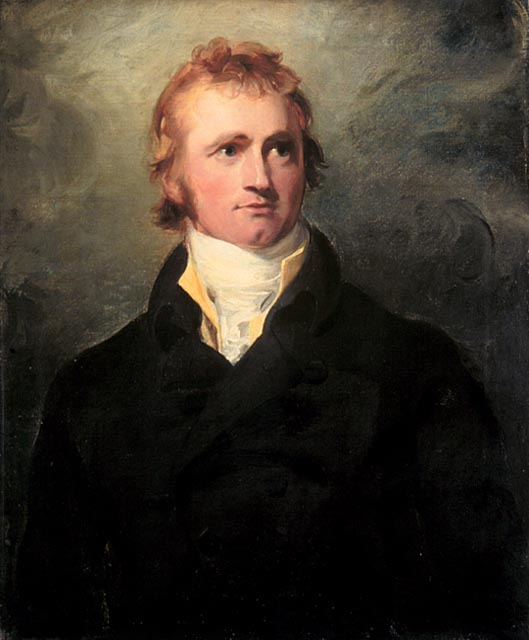
Sir Alexander Mackenzie
1800 portrait by Sir Thomas Lawrence
Wikipedia
Sir Alexander Mackenzie
b. c 1764 — Stornoway, Isle of Lewis, Scotland
d. 12 March 1820 — Dunkeld, Perthshire, Scotland
Mackenzie was a Scottish-Canadian explorer and fur trader known for accomplishing the first crossing of North America north of Mexico by a European in 1793.
As a leading member of the North West Company [1779–1821]y, he aspired to extend the Company’s operations into western Canada and selling those furs in China. His hopes thus were intrusions on the monopoly positions of both the Hudson’s Bay Company [Founded 1670 – dissolved 2025] and the East India Company.
Works pertinent to the Mount Robson region of which Mackenzie was author or co-author:
- — Voyages from Montreal on the River St. Lawrence through the Continent of North America to the Frozen and Pacific Oceans in the Years 1789 and 1793 with a Preliminary Account of the Rise, Progress, and Present State of the Fur Trade of That Country. London: T. Cadell, Jun., and W. Davies, 1803. Internet Archive [accessed 3/10/2025]
- — A map of America, between latitudes 40 and 70 North, and longitudes 45 and 180 West, exhibiting Mackenzie’s Track from Montreal to Fort Chipewyan and from thence to the North Sea in 1789 & to the West Pacific Ocean in 1793. London: T. Cadell, Jun., and W. Davies, 1803. Internet Archive
- — First Man West: Alexander Mackenzie’s Journal of His Voyage to the Pacific Coast of Canada in 1793. Edited by Walter Sheppe. Berkeley: University of California Press, 1962
- — The journals and letters of Sir Alexander Mackenzie. Edited by W. Kaye Lamb (1904–1999). Cambridge, U.K.: Published for the Hakluyt Society at the University Press, 1970
Mackenzie is the namesake of the following places in the Mount Robson region:
Events in the Mount Robson region in which Mackenzie was involved:
- 1789 Mackenzie reaches Arctic Ocean and explores Slave & Mackenzie River
- 1792 Mackenzie sets out
- 1793 Mackenzie crosses divide
- 1793 Mackenzie sees Sekani woman among Soda Cree
References:
- Mackenzie, Alexander [1764–1820]. Voyages from Montreal on the River St. Lawrence through the Continent of North America to the Frozen and Pacific Oceans in the Years 1789 and 1793 with a Preliminary Account of the Rise, Progress, and Present State of the Fur Trade of That Country. London: T. Cadell, Jun., and W. Davies, 1803. Internet Archive [accessed 10 March 2025]
- Mackenzie, Alexander [1764–1820]. A map of America, between latitudes 40 and 70 North, and longitudes 45 and 180 West, exhibiting Mackenzie’s Track from Montreal to Fort Chipewyan and from thence to the North Sea in 1789 & to the West Pacific Ocean in 1793. London: T. Cadell, Jun., and W. Davies, 1803. Internet Archive
- Mackenzie, Alexander [1764–1820]. First Man West: Alexander Mackenzie’s Journal of His Voyage to the Pacific Coast of Canada in 1793. Edited by Walter Sheppe. Berkeley: University of California Press, 1962
- Mackenzie, Alexander [1764–1820]. The journals and letters of Sir Alexander Mackenzie. Edited by W. Kaye Lamb (1904–1999). Cambridge, U.K.: Published for the Hakluyt Society at the University Press, 1970
- Wikipedia. Alexander Mackenzie
